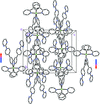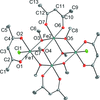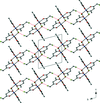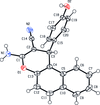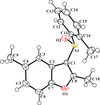issue contents
August 2015 issue

Cover illustration: Depression is a pervasive condition with anti-depressants that exhibit multi-modal mechanisms of action being a key target of drug development. Vortioxetine is one such drug under development and its crystal structure, and that of its methanol monosolvate, exhibit similar conformations. Thus, the aromatic rings linked by an S atom are almost perpendicular, and the N-linked atom of the piperazine ring is syn to the S. The difference in the crystal structures relates to the pivotal role of the methanol molecules which serve to link the organic molecules into hydrogen-bonded zigzag chains. See: Zhou, Gu, Sun, Hu & Wu [Acta Cryst. (2015). E71, 883-885].
research communications






























































data reports
metal-organic compounds








organic compounds














































































































 journal menu
journal menu











